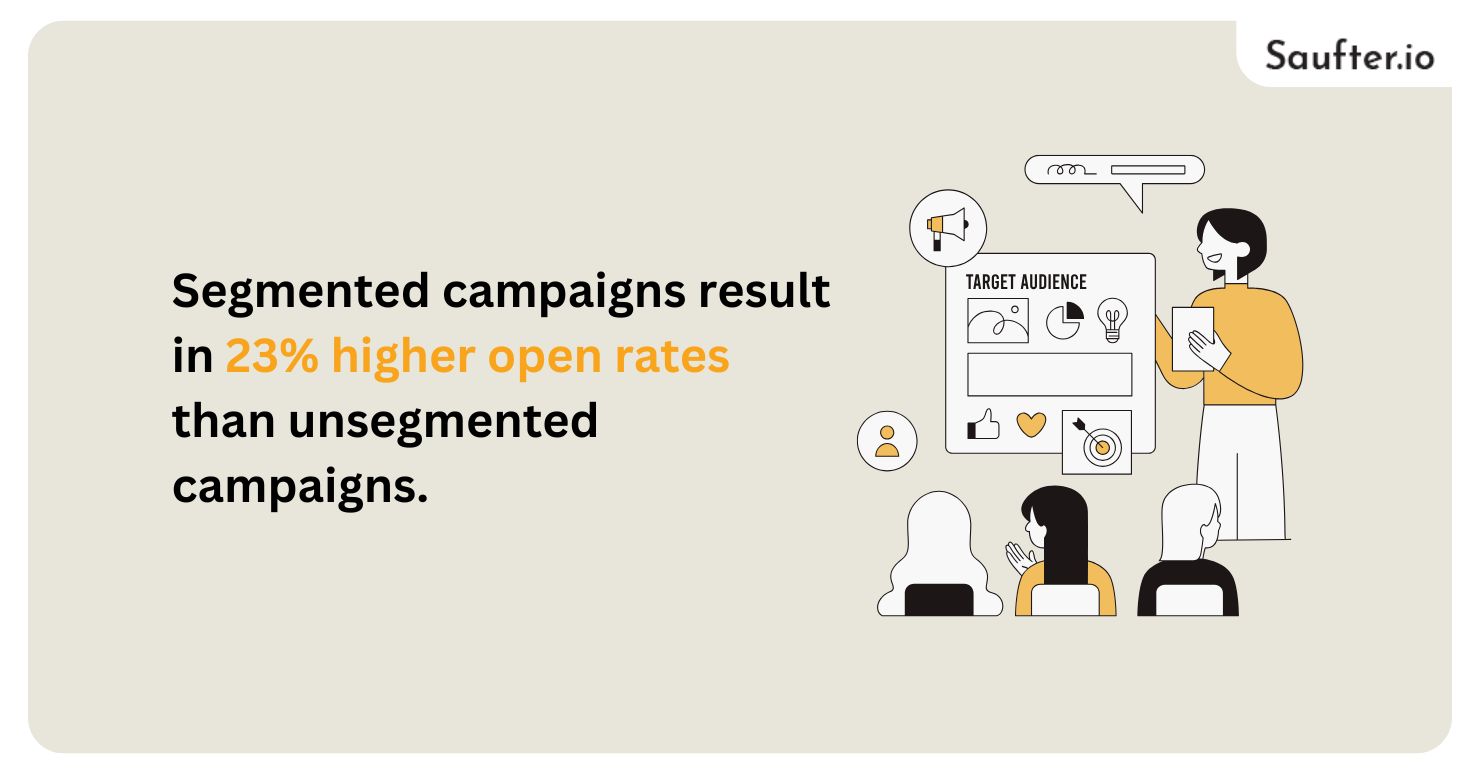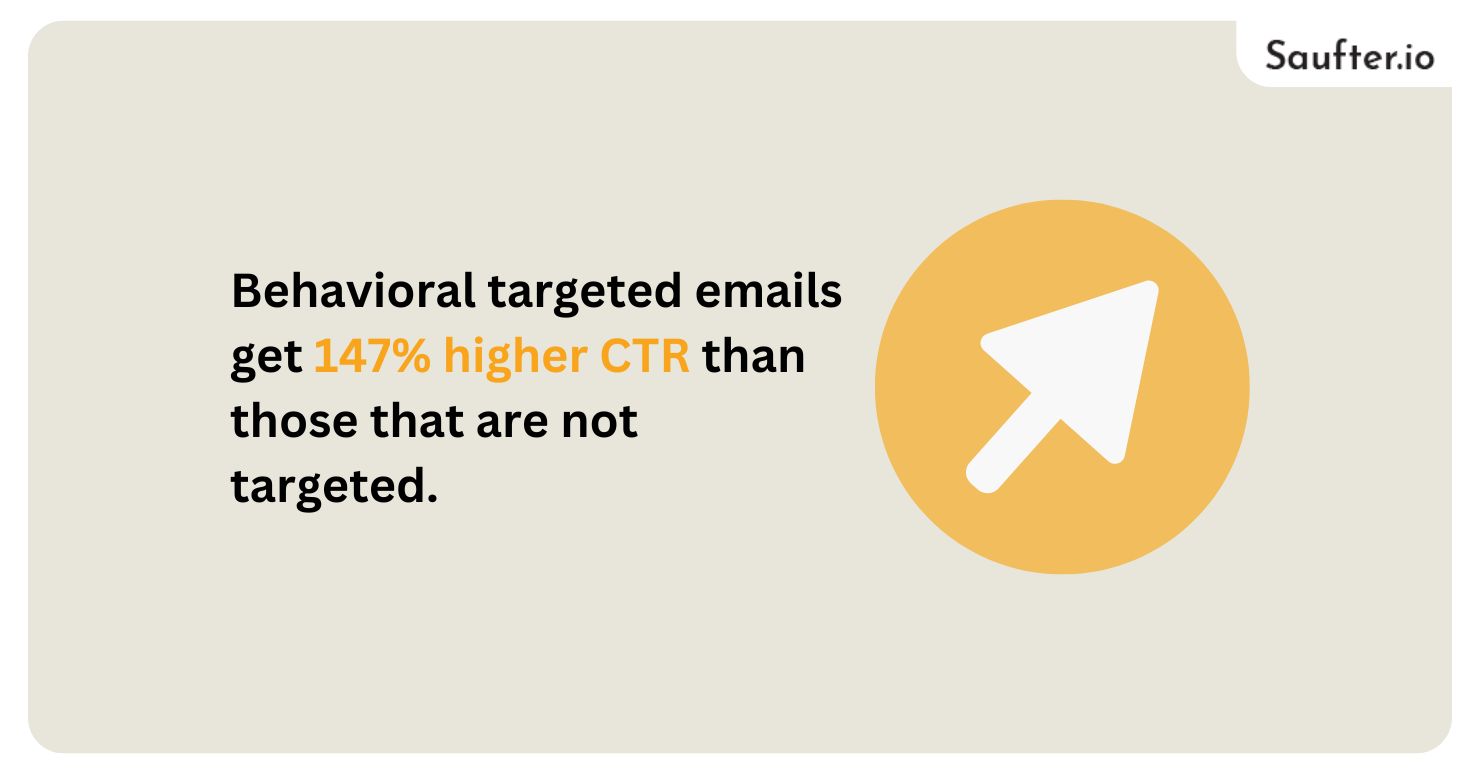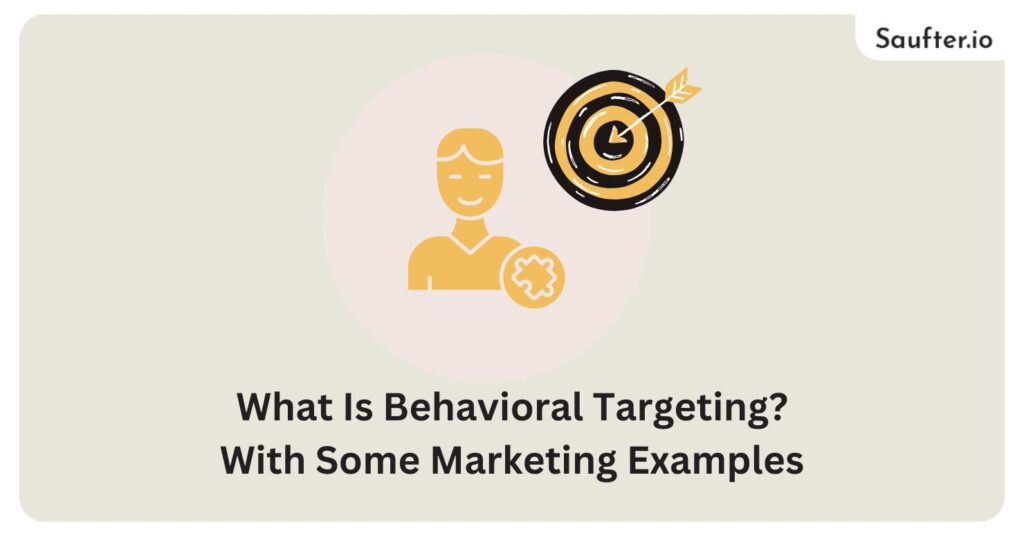Last Updated: December 2025
In today’s highly competitive digital landscape, understanding your audience is more than just a strategy—it’s a necessity. Behavioral targeting, a powerful marketing technique, leverages user behavior data to deliver personalized and relevant content to customers.
By analyzing actions like browsing history, search patterns, and purchase habits, businesses can connect with their audience on a deeper level, driving engagement and sales.
According to a study by Accenture, 91% of consumers are more likely to shop with brands that provide personalized recommendations and offers. This statistic underscores the significance of behavioral targeting in modern marketing.
In this article, we’ll explore what behavioral targeting is, how it works, and provide compelling behavioral targeting marketing examples.
What Is Behavioral Targeting?
Behavioral targeting is a marketing approach that uses online activity data to improve advertising campaigns. It includes gathering information from all across the web on a user’s browsing and shopping habits.
This data is then compiled into an ad that is tailored to fit your interests and actions and then shows up in your web browser.
With the ability to target ads to specific audiences most likely to be affected/influenced by it, they focus on giving content that audiences consider relevant.
This involves collating data like online searches, purchase histories, popular websites, and other web activities to build a user’s profile. This profile gives you an understanding of the tastes, aversions, and buying behavior of the target group.
These data can help companies create targeted advertisements that align with a user’s needs and interests but are not so targeted that they risk alienating the customer with irrelevant content.
Advantages of Behavioral Targeting
Behavioral targeting is a boon for firms who want to take their marketing efforts to the next level to be successful! Here’s how and why it has become essential in the era of digital:
1. Increased Relevance and Engagement
Behavioral targeting is based on users’ browsing and search history to show targeted ads tailored to what they are most likely to be interested in. Hence, increases engagement by making material pertinent to the individual’s interests.
2. Enhanced User Experience
Behavioral targeting allows content to be tailored to a user’s needs, which creates a more pleasant experience. These personalized interactions instil loyalty, enhance satisfaction, and lead to re-engagement.
3. Efficient Resource Allocation
Behavioral targeting can help focus resources on audiences that are most likely to convert, unlike wider marketing strategies. This precision not only saves costs but also improves ROI.
4. Higher Conversion Rates
Content that is tailored to the user base and observed behaviors has a much higher chance of converting. Leading to higher sales or getting users to take the desired actions, like a purchase or a sign-up.

Even, a recent article published on McKinsey noted that companies that use behavioral insights outperform their competitors by 85% in sales growth.
5. Privacy Compliance
Behavioral targeting is tuned towards regulations such as GDPR that are built on the foundation of transparency and user control.
6. Data-Driven Insights
One enterprising analysis of user behaviors can present valuable data that can help to shape strategies, leading to better decisions and optimization of campaigns over time.
Behavioral targeting enhances results through higher relevance, efficiency, and customer satisfaction, which is why it is integral to marketing strategy in this modern competitive age.
How Does Behavioral Targeting Work
Behavioral targeting uses data about user actions and preferences to deliver personalized marketing experiences. It follows a structured process:
1. Data Collection
The first step in the process is gathering data. Tools are like cookies and tracking pixels, which track users’ actions like when they visit a website, time on the page, clicks, downloads, etc.
Interaction and activities within the app/ platform offer insight and data on user preferences, purchase patterns, and browsing habits. Companies can buy additional data from third-party service providers for an enhanced understanding of user behavior as well.
2. Data Analysis
The data is then batched and analyzed, looking for trends and patterns. For example, marketers use these signals to identify pages that users visit the most, products that users add to a shopping cart, or interests that are associated with searches and clicks.
The link from raw data to actionable insights, enables marketers to decipher user intent and preferences by evaluating these behaviors. Companies can develop rich profiles that better represent the needs and interests of the user.
3. Audience Segmentation
When user behaviour is ascertained It is followed by audience segmentation. It is to be noted that, Segmented campaigns result in 23% higher open rates than unsegmented campaigns. Here, users are segmented into categories based on certain characteristics or behaviors.

One segment could include users who are often searching for travel content, another could consist of users who are leaving their online shopping carts. This allows marketers to tailor messages to each group based on their unique interests and behaviors.
4. Personalization of Content
Once segments have been set up, marketers produce bespoke content based on the preferences of users. Advertisements can feature products a customer has just visited, while email campaigns can feature abandoned carts or suggest items based on past purchases.
Website experiences themselves can even be personalized, seamlessly adjusting to present content that is relevant to the user. Such a degree of customization ensures that marketing messages seem relevant and useful to the targeted audience.
5. Deployment Across Channels
The tailored content is subsequently distributed across multiple marketing sectors. For example, websites might show ads based on a user’s browsing habits, and social media platforms implement retargeting strategies to re-engage users based on their online activity.
A certain action (Someone views a product but does not purchase it) can be used to trigger email campaigns. When content is delivered over various touch points, this is called behavioral targeting, and it creates a harmonious, engaging journey for users.
6. Real-Time Adjustments
Systems doing this kind of targeting are also built to adapt to in-the-moment changes. For instance, when a user makes a purchase, the system could instantly refresh the ads they’re exposed to so that they can see ads for related products rather than the product they’ve just purchased.
This will allow for a much more flexible approach to marketing to ensure that everything stays relevant and within recent activities as much as possible.
7. Respecting Privacy and Compliance
Lastly, behavioral targeting works in the world of privacy and compliance. Recent regulations such as GDPR and CCPA require companies to notify users about what types of data they are collecting, request consent, and provide opt-out options for users who prefer not to be targeted.
Thus, businesses can leverage behavioral data to improve their marketing efforts while respecting user privacy and earning their trust.
Behavioral Targeting Marketing Examples
As a result, more marketers are using behavioral targeting to succeed. Here are some key examples of its usage:
1. Cross-Selling and Boosting Sales
Understanding customer preferences and interactions helps promote related products. For example, if X and Y are adjunct products, then people who are interested in X product will likely respond to Y product ads too. This can help increase sales and make both products more relevant to each other.
2. Behavioral Targeting in Email Campaigns

As per statistics, behavioral targeted emails get 147% higher CTR than those that are not targeted. A step up from regular advertising, with campaign activity tailored to users, according to their behavior on websites/mobile apps. Examples include:
- Sending a reminder email for abandoned cart sessions.
- Affiliate generation with previously viewed products.
- Going after articles or pages that a user has interacted with.
The strategies enhance the relevance, productivity, and accuracy of e-mail targeting.
3. Behavioral Targeting in Remarketing
Behavioral targeting is used for retargeting to re-engage the visitors on the site. Platforms such as Facebook and Google provide tracking pixels that recognize visitor activity and prompt them to return and perform desired actions. These are easy to recommend and powerful in driving conversions.
4. Location-Based Targeting
Geographic targeting is an audience targeting measuring based on special interests or activities, real-world activities.
For example, businesses can re-engage users who visit their brick-and-mortar shop or a competitor’s store. The same goes for e-commerce, where marketers can segment audiences by what they do in person by serving personalized and contextual ads.
These techniques highlight the power of targeting types of behavior and leveraging that information to develop better, more relevant marketing arms.
Contextual Targeting Vs Behavioral Targeting
Contextual targeting positions ads based on the content of the webpage the user is currently viewing, e.g. hiking equipment ads on an outdoor blog. It enables keyword and topic-based searches, so it complies with privacy laws, as it does not track individual users.
Behavioural targeting is focused advertisements when, cookies, and data are used to customize experiences by examining a user’s actions such as search history or purchase history.
Behavioral targeting can increase your engagement significantly when it becomes more relevant with tailored ads. However, it brings up some privacy concerns, as GDPR does not allow you to use these premium channels willingly. Hence, it makes compliance very strict for the companies.
While contextual targeting is based on the relevance of content, behavioral targeting is all about personalized advertisements. Both can act in synergy to maximize ad effectiveness while ensuring relevance, personalization, and privacy.
Behavioral Retargeting
Two advertising strategies are behavioral targeting and behavioral retargeting, but they have different functional purposes. Behavioral targeting uses the online activities of users like their browsing history and clicks to predict their interests and deliver personalized advertisements to prospective customers. Its goal is to attract new audiences using the way people interact online.
Behavioral retargeting on the other hand applies only to users who have previously expressed interest in a brand but haven’t completed a call to action such as making a purchase, or signing up. It makes use of tracking tools, like cookies, to display ads reminding users of products or services that they user viewed previously and encouraging the user to return and convert.
Broadly speaking, targeting brings in new users, and retargeting takes them back to the site.
Saufter: Best Email Marketing Automation Software

Saufter is an intelligent customer engagement and email marketing platform that analyzes user behavior on your website or portal, as well as their journey stages, to deliver tailored campaign recommendations.
For example, it can suggest a “how-to” article for features your users haven’t yet explored. Each week, you’ll receive fully drafted emails and in-app campaigns, ready for your approval.
In addition, Saufter monitors your competitors’ latest blogs and generates content campaign ideas based on their trending topics.
Key features include:
- Automated user segmentation: Group users into cohorts based on their behavior.
- Campaign suggestions: Receive email campaign ideas designed to boost conversions and reduce churn.
- SEO insights: Get automated recommendations for SEO campaigns to enhance visibility.
- Predictive analytics: Identify trends in conversion rates and churn risks with predictive modelling.
Conclusion
Behavioral targeting is revolutionizing how brands connect with their audiences, offering a more personalized and effective approach to marketing.

Studies show that 80% of consumers are more likely to purchase from a brand that provides a tailored experience.
By leveraging behavioral insights, marketers can deliver relevant content, improve engagement, and boost conversion rates.
Platforms like Saufter make it even easier to implement behavioral targeting at scale. With its automated recommendations and campaign insights, you can not only understand user behavior but also act on it with precision.
As consumer expectations continue to shift towards personalization, adopting tools like Saufter can help your brand stay ahead in the competitive landscape.
















